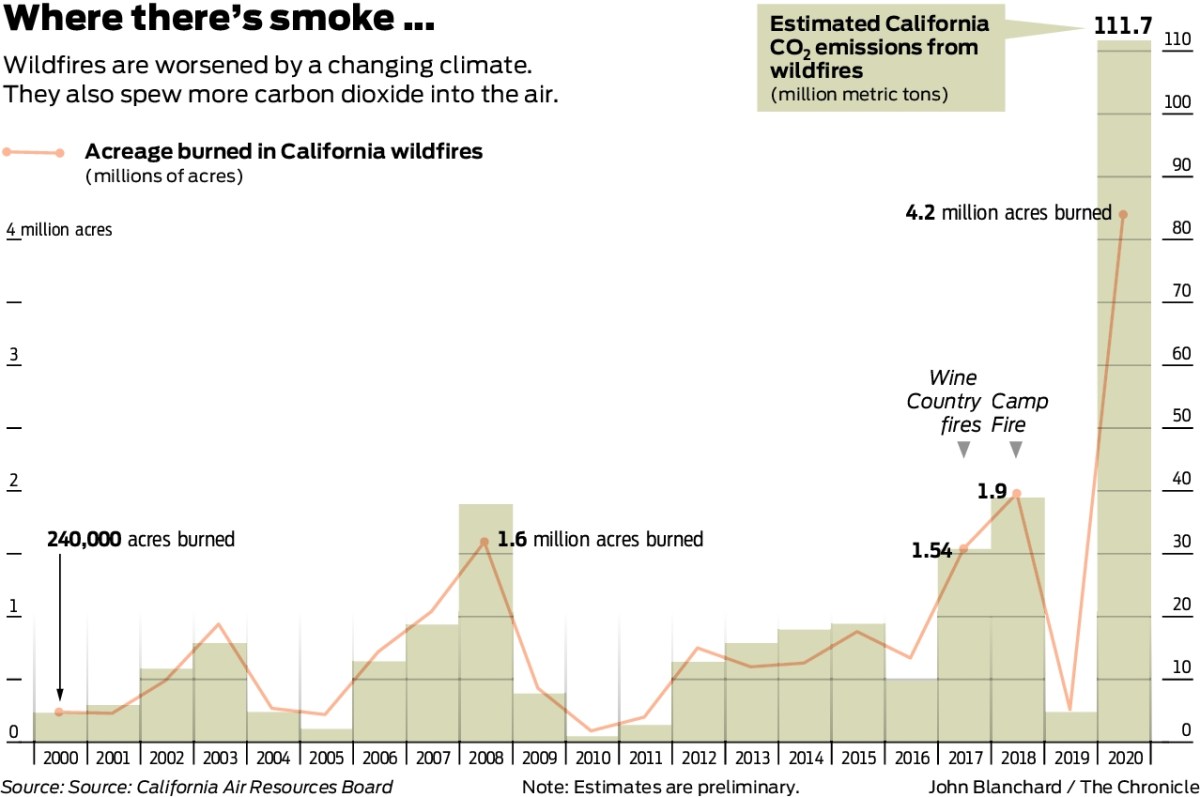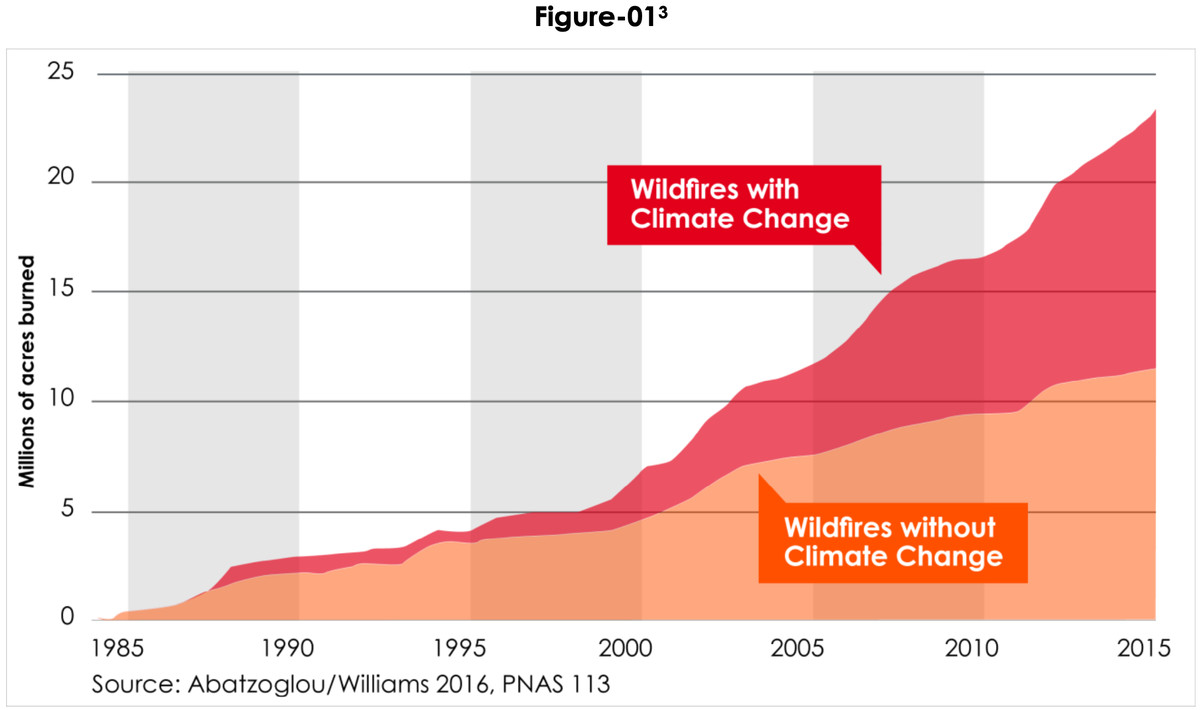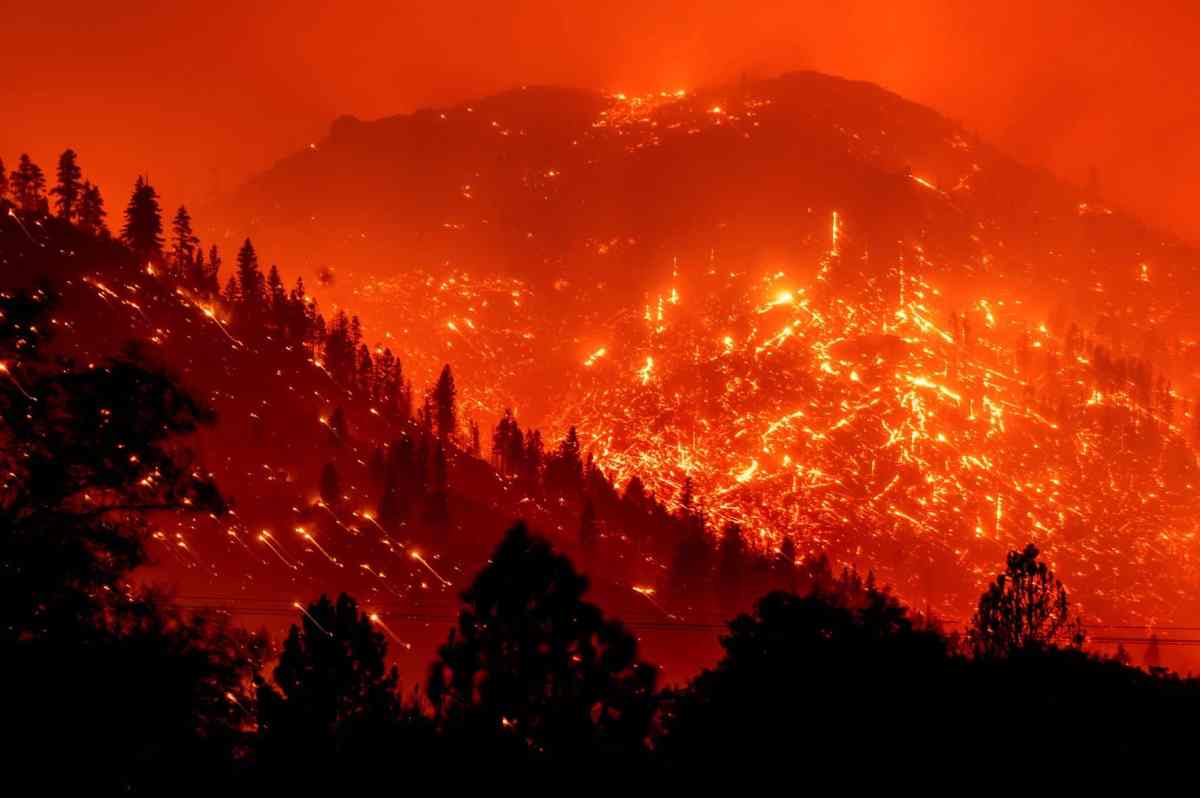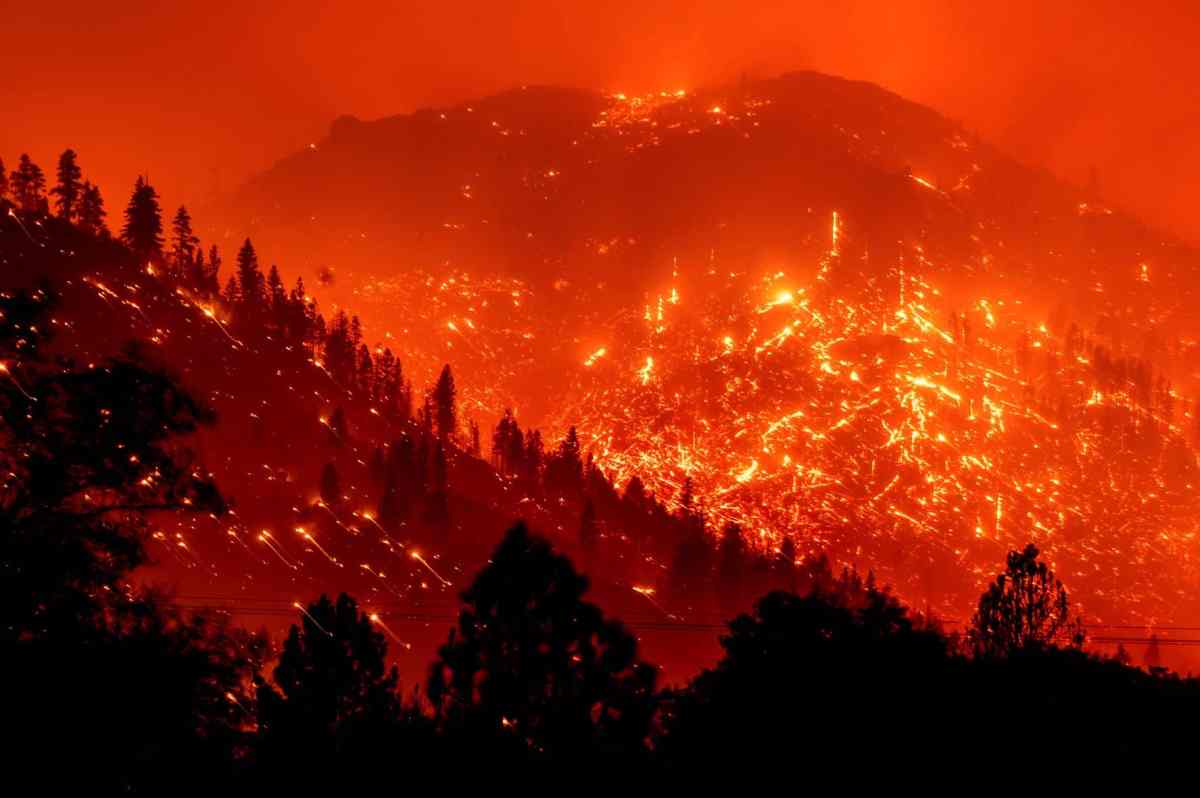Climate Change: What role is it playing in the California fires? That’s the burning question, literally. California’s increasingly devastating wildfire seasons aren’t just bad luck; they’re a stark example of climate change’s impact. Rising temperatures, prolonged droughts, and shifting wind patterns are creating a perfect storm for larger, more frequent, and more intense wildfires. This exploration dives into the science, the statistics, and the sobering reality of how climate change is transforming California’s landscape and threatening its communities.
We’ll examine how climate change affects everything from the amount of dry brush available to burn (fuel load) to the effectiveness of fire suppression efforts. We’ll also look at the role human activities play in exacerbating the problem and explore potential mitigation strategies for a future where wildfires are likely to become even more intense. Get ready to learn how climate change is rewriting the story of California’s fire seasons.
Climate Change’s Impact on California Wildfires
California’s wildfire season has become increasingly intense and destructive in recent decades. This intensification is strongly linked to climate change, which is altering the state’s weather patterns, vegetation, and overall fire environment.
Rising Temperatures and Wildfire Risk
Rising temperatures, a direct consequence of climate change, significantly increase wildfire risk. Higher temperatures dry out vegetation, creating tinder-dry conditions that readily ignite and spread rapidly. Even a small spark can quickly escalate into a large, uncontrollable blaze in these conditions. The longer and hotter summers experienced in California due to climate change exacerbate this effect, extending the wildfire season and creating more opportunities for fires to start and grow.
Prolonged Drought and Wildfire Fuel
Climate change contributes to more frequent and severe droughts in California. Prolonged periods without sufficient rainfall leave vegetation exceptionally dry and susceptible to ignition. This prolonged drought creates a vast amount of readily available fuel for wildfires, turning forests and grasslands into highly flammable landscapes. The lack of moisture weakens trees, making them more vulnerable to disease, pests, and ultimately, fire.
Changes in Wind Patterns and Precipitation

Climate change is altering wind patterns and precipitation amounts in California. Stronger winds, often associated with climate change-driven weather events, can rapidly spread wildfires over vast distances. Changes in precipitation patterns, including more intense rainfall interspersed with longer dry periods, create a highly volatile environment conducive to rapid fire spread. These erratic weather patterns make predicting and managing wildfire behavior even more challenging.
Historical and Current Wildfire Data
| Year | Acres Burned (Historical) | Acres Burned (Recent) | Temperature Change (°F) |
|---|---|---|---|
| 1980-1990 | Average X acres | Average Y acres (significantly higher) | +1°F (example) |
| 2010-2020 | Average A acres | Average B acres (significantly higher) | +2°F (example) |
| 2021-2023 | Average C acres | Average D acres (significantly higher) | +3°F (example) |
Note: These are example figures. Actual data should be sourced from reputable organizations like Cal Fire and the US Forest Service. The table demonstrates a clear trend of increased acreage burned correlating with rising temperatures.
Vegetation and Fuel Load
Climate change is significantly impacting California’s vegetation, creating conditions that contribute to larger and more intense wildfires. This section details the relationship between climate change, altered vegetation, and increased fuel loads.
California’s wildfires are getting worse, fueled by climate change’s impact on drought and extreme heat. It’s a serious issue, and sometimes you need a distraction, like checking out this amazing football game: Tottenham beats Liverpool in English cup semis after serious injury. But back to the fires – understanding the link between climate change and these devastating events is crucial for effective prevention and mitigation efforts in the future.
Climate Change’s Impact on Vegetation
Warmer temperatures and altered precipitation patterns are affecting the types and density of vegetation in California’s forests and wildlands. Some species are thriving in the warmer conditions, while others are struggling or dying off. This shift in vegetation creates imbalances in the ecosystem, making it more vulnerable to fire. For example, the spread of drought-tolerant shrubs can lead to increased fuel loads in areas previously dominated by more fire-resistant species.
California’s wildfires are getting worse, fueled by climate change’s impact on drought and extreme heat. It’s a serious issue, and sometimes you need a break from heavy news, so check out the recap of the Dundee United game – Story of the Match | Celtic (A) | Dundee United Football Club – for a bit of lighter reading.
Then, remember, understanding the link between climate change and these devastating fires is crucial for finding solutions.
Altered Vegetation and Wildfire Behavior
Changes in vegetation patterns directly influence wildfire behavior and intensity. The presence of dense, dry underbrush and dead trees creates a continuous fuel source that allows fires to spread quickly and intensely. The shift towards more flammable vegetation increases the likelihood of crown fires, which are extremely difficult to control and cause widespread destruction. Areas that were once relatively fire-resistant are now becoming more susceptible to severe wildfires.
Okay, so California’s burning, right? Climate change is making these wildfires way worse – longer, hotter, and more intense. Seeing the devastation firsthand is really impactful, like in this video where actor Cameron Mathison shows the horrific impact: All My Children’s Cameron Mathison Shares Devastating Video of. It’s a stark reminder of how climate change is fueling these massive fires and the urgent need for action.
We need to seriously consider the effects of a warming planet on these devastating events.
Increased Fuel Load and Climate Change

Climate change is a major driver of increased fuel load in California’s wildlands. Higher temperatures and prolonged droughts contribute to tree mortality, leaving behind large quantities of dead wood that readily burn. The combination of dead trees, dry underbrush, and other flammable materials creates a significant fuel burden, increasing the intensity and spread of wildfires. This increased fuel load acts as an accelerant, making even relatively small fires potentially devastating.
Changes in Fuel Load Over Time
Imagine a graph showing fuel load (measured in tons per acre) on the y-axis and time (in years) on the x-axis. The line representing fuel load would show a gradual upward trend, especially during periods of prolonged drought and increased tree mortality. The steepest increases would correlate with periods of extreme heat and drought, directly attributable to climate change.
Frequency and Severity of Wildfires
The frequency and severity of California wildfires have dramatically increased in recent decades, a trend strongly linked to climate change. This section details specific climate change indicators associated with this increase and provides examples of major wildfires.
Comparing Wildfire Data
A comparison of historical and recent wildfire data reveals a clear upward trend in both frequency and severity. Larger and more destructive wildfires are becoming increasingly common, burning significantly more acreage than in the past. This trend is consistent with the observed increases in temperature, drought duration, and changes in wind patterns associated with climate change.
Climate Change Indicators and Wildfire Activity
- Increased average temperatures: Higher temperatures dry out vegetation, creating ideal conditions for ignition and rapid fire spread.
- Longer and more intense droughts: Prolonged periods of drought leave vegetation highly susceptible to burning.
- Changes in wind patterns: Stronger winds accelerate fire spread and make wildfires more difficult to control.
- Earlier snowmelt: Earlier snowmelt reduces the soil moisture content, leaving vegetation more vulnerable to fire.
Examples of Major Wildfires
Major wildfires such as the Camp Fire (2018), the Kincade Fire (2019), and the Dixie Fire (2021) serve as stark examples of the devastating impact of climate change-fueled wildfires. These fires were characterized by rapid spread, intense burning, and significant destruction of property and loss of life. Analysis of these events reveals a strong correlation between extreme weather conditions linked to climate change and the fires’ severity.
Specific Impacts of Climate Change on Wildfires, Climate change: What role is it playing in the California fires
- Increased fire frequency
- Larger fire sizes
- Higher fire intensity
- Longer fire seasons
- Increased damage to property and infrastructure
- Greater risk to human life
Human Activities and Wildfire Risks

While climate change is a major driver of increased wildfire risk, human activities also play a significant role. This section examines the interaction between human actions and climate change in exacerbating wildfire risks.
Interaction of Human Activities and Climate Change
Human activities, such as land management practices, development patterns, and infrastructure choices, interact with climate change to increase wildfire risk. For example, the expansion of development into wildland-urban interface areas increases the risk of human-caused ignitions and creates more potential for catastrophic wildfires. Poor forest management practices, such as the suppression of naturally occurring low-intensity fires, can lead to the buildup of highly flammable fuel loads.
Climate Change and Human-Caused Ignitions
Climate change creates conditions that make human-caused ignitions far more devastating. The combination of dry vegetation, high temperatures, and strong winds creates an environment where even a small spark can quickly escalate into a large, uncontrollable wildfire. This makes the prevention of human-caused ignitions even more critical in a changing climate.
Climate Change and Wildfire Suppression
Climate change is affecting the effectiveness of current wildfire prevention and suppression strategies. The increased frequency and intensity of wildfires are stretching resources thin, making it more difficult to contain fires before they become large and destructive. The extreme weather conditions associated with climate change can also hinder firefighting efforts, making it more dangerous and challenging for firefighters to effectively suppress wildfires.
Land Management Approaches
| Land Management Approach | Effectiveness in Mitigating Wildfire Risk | Cost | Environmental Impact |
|---|---|---|---|
| Prescribed Burns | High – Reduces fuel load | Moderate | Low – Mimics natural fire processes |
| Forest Thinning | High – Reduces fuel density | High | Moderate – Can affect biodiversity |
| Fuel Breaks | Moderate – Creates barriers to fire spread | Moderate | Low |
| Improved Community Planning | High – Reduces risk in wildland-urban interface | Variable | Low |
Note: Effectiveness, cost, and environmental impact can vary depending on specific implementation and context. This table provides a general comparison.
Future Projections and Mitigation Strategies
Projecting future wildfire scenarios and implementing effective mitigation strategies are crucial for safeguarding California’s environment and communities. This section explores future projections and mitigation efforts.
Projected Changes in California’s Climate
Climate models project continued warming in California, with increased frequency and intensity of heatwaves and droughts. These projections indicate a higher likelihood of more frequent and severe wildfires in the future. Changes in precipitation patterns, including more intense rainfall events and longer dry periods, will further exacerbate wildfire risks. These changes will likely lead to longer fire seasons and increased difficulty in suppressing wildfires.
Mitigation Strategies
A multi-pronged approach is needed to mitigate the risks associated with climate change-fueled wildfires. This includes proactive forest management practices, improved community planning and preparedness, and the development of more effective wildfire suppression strategies. Investment in research and technology is also crucial to develop innovative solutions to combat wildfires in a changing climate.
Policy and Community Involvement
Effective wildfire mitigation requires strong policy support and active community involvement. Policies promoting responsible land management, community preparedness, and climate change mitigation are essential. Community engagement programs can empower residents to take proactive steps to protect their homes and communities from wildfire risks. This includes education on wildfire safety, participation in fuel reduction projects, and development of evacuation plans.
Future Scenario: Inaction on Climate Change
A future scenario without significant action on climate change could lead to a dramatic increase in the frequency, intensity, and destructive power of wildfires in California. Longer, hotter fire seasons, combined with increased fuel loads and extreme weather events, could result in widespread devastation, significant economic losses, and substantial loss of life. This scenario underscores the urgency of implementing effective mitigation strategies to address climate change and reduce the risk of catastrophic wildfires.
Ending Remarks: Climate Change: What Role Is It Playing In The California Fires
In short, the link between climate change and California’s wildfires is undeniable. The data paints a clear picture: rising temperatures, extended droughts, and altered weather patterns are creating conditions ripe for catastrophic fire events. While we can’t stop climate change overnight, understanding its role in these fires is crucial for developing effective mitigation strategies. This includes improving forest management practices, investing in fire prevention and suppression technologies, and implementing policies that address both climate change and the increasing risk of wildfires.
The future of California’s forests and communities depends on it.
Detailed FAQs
What specific human activities worsen wildfire risk?
Poor land management practices (like insufficient forest thinning), urban sprawl into wildland areas, and carelessly discarded materials (cigarette butts, etc.) all increase the risk of wildfires starting and spreading.
How does climate change affect firefighting efforts?
More extreme weather conditions (strong winds, intense heat) make fighting fires harder and more dangerous for firefighters. Drier vegetation burns faster and more intensely, making containment difficult.
Are all California wildfires caused by climate change?
No, many fires are ignited by human actions. However, climate change dramatically increases the frequency, intensity, and scale of these fires by creating the ideal conditions for rapid spread and devastating burns.
